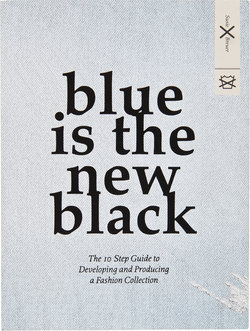Читать книгу Blue is the New black - Susie Breuer - Страница 4
На сайте Литреса книга снята с продажи.
ОглавлениеPreface
Like most girls, I became interested in fashion at a fairly early age, tearing pages out of glossy magazines and learning how to use a sewing machine, but unlike most girls who are content to remain on the outside of the industry as a consumer, I decided to venture inside to become part of the global business of bringing fashion to the people.
Starting in the business at the humblest level, I have, over the years, worked in various roles in a wide range of companies, always learning on the job, often making mistakes, though seldom the same one twice, whilst experiencing the highs and the lows involved in the process of turning a designer’s ideas into reality.
On countless occasions I wished that there was a book where I could look to find out what to do next, and how to do it, but there never was. As my experience grew and I became more and more senior in the business, watching assistants struggle with the same difficulties I had years ago, I realised that such a book was needed and that, perhaps, I had the breadth of experience to take on the task. Before doing so, I looked to see what was already in print, and found that whilst there are many books about fashion, there still isn’t a book available that gives the full, detailed picture of the whole process, that sets out in detail who does what, and in what order these have to be done for the process to work. I recognised the gap in the market and set about trying to fill it.
This book is written from my own personal experience of developing and producing fashion collections from high street brands to a catwalk line, and includes all the steps that are needed to turn the designer’s sketch into a garment. It sets out the roles of all the people involved, the terms people use and the different responsibilities that rest with the people in various positions; in short, it is a step by step guide to developing a collection. In writing the book I considered it awkward to use ‘they’ when talking about a single individual, so I have allocated male or female personal pronouns randomly to people performing various roles/functions, but I want to make it clear that any role/function can be performed by persons of either sex.
With every brand having its own method of working depending on its location in the world and their resources, it is hard to anticipate every different scenario that a developer or production coordinator may be faced with; however, what you will find in this book are the basic ideas that can help you understand the bigger picture of how a collection is made, and to help you find your way through the job and the industry as a whole. Development or production is not especially glamorous, but they are absolutely essential to the success of the process. It is no exaggeration to say that these departments are the linchpin of the creation of a fashion collection; without the tireless efforts of these people, invisible from outside the organisation, the collection simply would not be made.
The book has been written both as a guide to be read from cover to cover and as a reference book to be kept close to hand to be consulted as and when necessary. It might not tell the reader exactly how company x manages a certain procedure, but it provides the basic framework that makes the procedure at company x understandable. Although there is considerable variation between companies in job titles, management structures and chains of responsibility, what needs to be done to turn a design on paper into a garment on somebody’s back, is pretty much the same everywhere.
Developing and producing a collection is extremely hard. It takes patience, determination and flexibility, but it is also one of the most rewarding aspects of the industry with the mix of creativity and problem solving. I hope this book helps to demystify the procedures and terminology and encourages more people to take this route into the industry.
